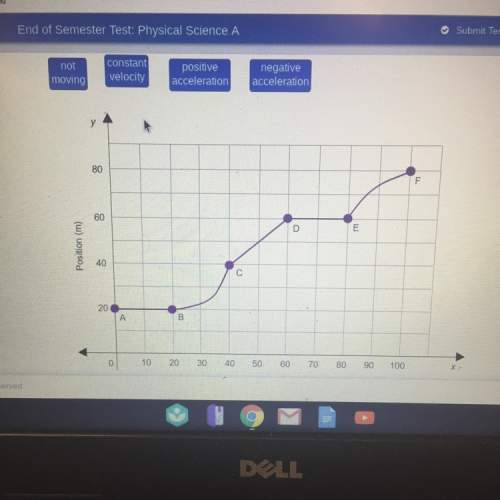
The GPS (Global Positioning System) satellites are approximately 5.18 mm across and transmit two low-power signals, one of which is at 1575.42 MHz (in the UHF band). In a series of laboratory tests on the satellite, you put two 1575.42 MHz UHF transmitters at opposite ends of the satellite. These broadcast in phase uniformly in all directions. You measure the intensity at points on a circle that is several hundred meters in radius and centered on the satellite. You measure angles on this circle relative to a point that lies along the centerline of the satellite (that is, the perpendicular bisector of a line which extends from one transmitter to the other). At this point on the circle, the measured intensity is 2.00 W/m^2.
Required:
What is the intensity at a point on the circle at an angle of 4.45°?

Answers: 1
Another question on Physics

Physics, 21.06.2019 17:20
The specific heat of silver is 0.057 calories/gram°c. if 10.0 grams of silver were heated and the temperature of the sample changed by 20.0°c, how many calories of heat energy were absorbed by the sample?
Answers: 1

Physics, 21.06.2019 23:00
Follow these directions and answer the questions. 1. set up the ripple tank as in previous investigations. 2. bend the rubber tube to form a "concave mirror" and place in the ripple tank. the water level must be below the top of the hose. 3. generate a few straight pulses with the dowel and observe the reflected waves. do the waves focus (come together) upon reflection? can you locate the place where the waves meet? 4. touch the water surface where the waves converged. what happens to the reflected wave? 5. move your finger twice that distance from the hose (2f = c of c, center of the curvature) and touch the water again. does the image (the reflected wave) appear in the same location (c of c)? you may have to experiment before you find the exact location. sometimes it is hard to visualize with the ripple tank because the waves move so quickly. likewise, it is impossible to "see" light waves because they have such small wavelengths and move at the speed of light. however, both are examples of transverse waves and behave in the same way when a parallel wave fronts hit a curved surface.
Answers: 1

Physics, 22.06.2019 14:00
What is the force that opposes motion and works against the downward pull? a) friction b) gravity c) weight d) acceleration
Answers: 1

Physics, 22.06.2019 14:30
What is the relationship between the direction of motion of the balloon and the wind currents
Answers: 1
You know the right answer?
The GPS (Global Positioning System) satellites are approximately 5.18 mm across and transmit two low...
Questions



Computers and Technology, 29.04.2021 17:20

Mathematics, 29.04.2021 17:20


Biology, 29.04.2021 17:20

Mathematics, 29.04.2021 17:20


Mathematics, 29.04.2021 17:20

English, 29.04.2021 17:20

Spanish, 29.04.2021 17:20

Law, 29.04.2021 17:20


Social Studies, 29.04.2021 17:20





Biology, 29.04.2021 17:20

Mathematics, 29.04.2021 17:20




